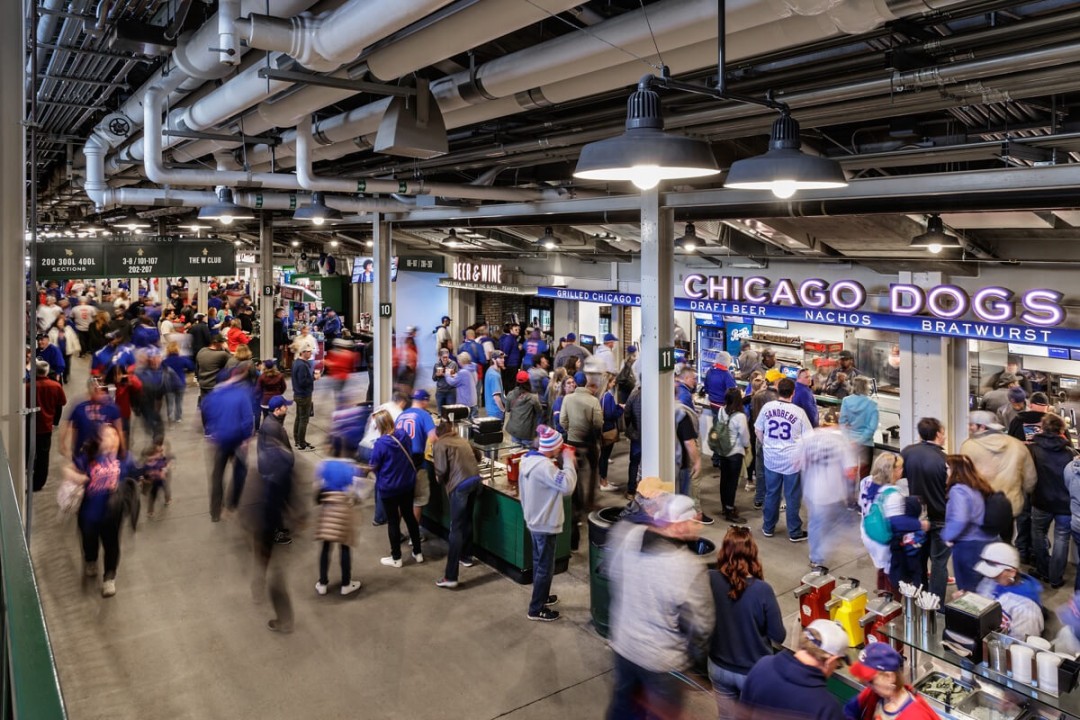
How to Maximize Your Stadium’s Food and Beverage Experience
Fans today have more options to view an event than ever before as the digital landscape continues to evolve. To remain competitive and differentiated, teams and venues are directing more resources to maximize their stadium’s food and beverage experience for fans. Food and beverage is one of the key experience drivers fans cite as a reason to attend an event, and there are several strategies venues can implement to create a unique, enjoyable, and convenient experience.
Introduce unique local food stories
The food and beverage mix shapes a story at each venue that extends beyond just a single game. And each story is different. What diehard fans of a long-time NFL franchise in the Midwest prefer may not suit first-time event goers at a brand new baseball venue on the West Coast.
It’s true hot dogs and popcorn are still top-sellers at many stadiums, and that won’t go away. Yet, more and more fans now expect to find something at the stadium that’s not available elsewhere. And bringing in more demanded local flavors is key. A compelling, curated food story finds a way to blend both. How can fans who want a hot dog get it more conveniently, and at the right price? And what elevated options are available for those who want a memorable meal at the stadium?
Introducing a unique branded identity for concessions is one approach, such as the STL Kitchen culinary platform at Enterprise Center in St. Louis. Other venues build relationships with local restaurants and chefs to establish local culinary credibility. Chef Series activations like the annual rotating culinary program at Wrigley Field show the power of these partnerships. In these cases, venues work with local chefs and restaurants to source product, spec recipes, and craft signature menus you can only find at the stadium.
Deliver added F&B value to maximize your stadium’s fan experience
When fans spend money on tickets, they want to know they are getting more than just admission to the venue. F&B price point and convenience also deliver added value. A commitment to reducing prices on fan favorites can have ripple effects, from enticing fans to purchase food and beverage inside venues rather than eating somewhere else, to boosting overall fan satisfaction.
Mercedes-Benz Stadium, home of the NFL’s Atlanta Falcons, implemented “Fan-First” pricing in May 2016. The menu was engineered to bring down prices – fans could purchase a hot dog, fries, and soda for just $7 – and included the products fans ordered the most, like hot dogs, hamburgers, pizza, fries, nachos, popcorn, pretzels, bottled water, and domestic beer. In addition to affordable pricing, premium brands and local restaurants are offered to give fans more choice.
The “Fan-First” program positively impacted revenue and fan arrival time – more than 6,000 Falcons fans per game arrived at the stadium earlier in 2017 than in previous years to take advantage of the food and beverage value options. Mercedes-Benz Stadium’s focus was not necessarily about the bottom line – it was about using food and beverage to improve the fan experience. It paid off because the Falcons ranked first in NFL fan experience surveys in 2017.
Reimagine the premium seating experience
Venues are also looking for ways to improve the experience in premium and all-inclusive spaces, as fan preferences have changed over the years. Large companies traditionally purchased private boxes to bring their clients to events, but now many of those organizations are starting to reconsider whether they actually need an entire box. Some are switching to season-ticket packages and looking at tickets in new spaces.
In turn, venues are moving toward more shared food spaces. Instead of going to a box and ordering food, fans share dining spaces with eight to 10 boxes, which feature a more traditional chef table or an action station. Fans still sit in their own box, but travel to a communal space to access F&B. This option allows customers to select more food options while paying a cost per person per game. Other all-inclusive dining spaces are accessible to a larger fan population and come with an annual membership cost. And some venues allow fans with general admission tickets to tack-on an all-inclusive F&B space with an added per game cost.
As fan preferences and viewing experiences continue to change, venues need to consider evolving their food and beverage structure to maximize fan value. It’s not only about the bottom line anymore – it’s about giving fans an experience that gets them off the couch and keeps them coming back.



